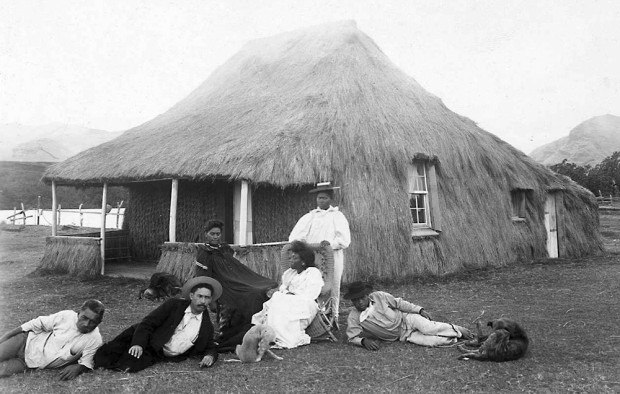LIHU‘E — The Rev. George Rowell of Waimea spent a great deal of his career in Hawai‘i building things. In 1846 the large family arrived by canoe to Waimea. They had been happily living in a home he had restored
LIHU‘E — The Rev. George Rowell of Waimea spent a great deal of
his career in Hawai‘i building things. In 1846 the large family
arrived by canoe to Waimea. They had been happily living in a home
he had restored at Wai‘oli, Hanalei.
Editor’s note: On Dec. 3, the Kaua‘i Museum celebrates its 50th anniversary. Museum leaders have chosen 50 stories from exhibits, collections and the archives of the museum to share with the public. One story will run daily through Dec. 3.
LIHU‘E — The Rev. George Rowell of Waimea spent a great deal of his career in Hawai‘i building things.
In 1846 the large family arrived by canoe to Waimea.
They had been happily living in a home he had restored at Wai‘oli, Hanalei.
They had been warned that the church and house built around 1829 at Waimea may need repairs.
The extent of the “repairs” was staggering.
The house had been literally abandoned for nearly a decade and the family had to camp beneath the first floor as the roof had literally caved in.
The windows and doors had been removed and recycled elsewhere.
To top it off the church, made of mud and grass, a crude form of adobe, had literally melted in the tropical climate.
Being a carpenter and furniture-maker, Rowell and his oldest son William first set up a workshop in the back of the house and then went to work rebuilding their new home.
When that was done Rowell set his eyes on the church, with plans to build one of the final stone churches in the island.
During all this, the workshop was rarely idle.
If it ever was, William Rowell found gainful employment fashioning windows with glass panes.
The panes were shipped in wooden barrels that came precut in standard sizes to fit the barrels.
These were highly coveted by the Native Hawaiians of the area who set them into their grass houses.
Long into the 19th century, thatched houses could be found with neat sash windows in a casement, totally functional.
William Rowell also helped his father build these windows and furniture that were sold or traded to supplement their meager income as missionaries and teachers.
He is thought to be the first person on the island to have a lathe and in much of his furniture there are elements that are turned in a wonderfully robust manner.
This is how the family acquired their dairy herd and founded the longest-running dairy (1854) at Waimea.
In its collection, the museum has several pieces of George Rowell’s homemade furniture — a four post-bed, a day bed, and a faux painted trunk along with photographs of his other pieces.



